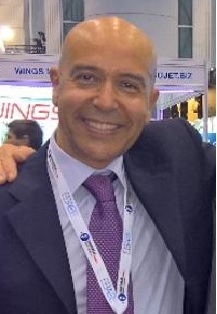AAM Spotlight: Stuart Simpson, Vertical Aerospace CEO
Details
More Products & Services
Products & Services
Aerospace | Aviation Week Network
Aviation Week Network
https://aviationweek.com/themes/custom/particle/dist/app-drupal/assets/awn-logo.svg
Home - Aviation Group Marketing
Aviation Week Network
120 data points on over 156,000 commercial and business aviation aircraft, including military transports. Discover the most trustworthy resource for the complete aircraft history, plus ad hoc reports, month-over-month trend analysis and details on expected deliveries through 2050.
People

Andrea Rossi Prudente
Aviation Week Network

Anthony Lim
Aviation Week Network
Sales director

Becca Balmes
Aviation Week Network

Belinda Tan
Aviation Week Network

Brian Everstine
Aviation Week Network
Editor

Eddie Krankowski
Aviation Week Network
Assistant Manager, Tradeshows

erving dockery
Aviation Week Network

Lisa Tan
Aviation Week Network
Senior Marketing Manager

Mark Thomas
Aviation Week Network
Description
Stuart Simpson is CEO of Vertical Aerospace. He recently sat down with Aviation Week to discuss the company's planned hybrid aircraft and provide a general update on its testing and development program. A partial transcript follows:
Aviation Week: How do you plan to incorporate a hybrid eVTOL into Vertical Aerospace's business and what is the market opportunity for this type of aircraft?
Simpson: The first point I'd make is something I'm genuinely excited about. A couple of months after I joined, I managed to find a little bit of money within the cash envelope that we had to kick off a hybrid program. We did this 18 months ago.
Now, we have a hybrid [powertrain] already on the bench working. It has a 1,000-mile range, it's 1,200 kilos and has 3,000 pounds of payload. It's so silent on takeoff and landing. It has a low heat signature and low noise signature; it's phenomenal. We've got the control rules working, and we've got far enough down in the market discussions where the board of directors felt comfortable putting this in the public domain.
So, there are great opportunities, and it's just so exciting for the business. We don't have to slow anything down, and we can keep amazing people motivated, engaged and I think it will be world leading.
Is this intended to be a dual-use aircraft for both commercial and defense customers?
That's the way we think about it. I think people could easily do 1,000 miles comfortably in this aircraft. Ours has a cabin that you can sit and stretch your legs out in. So, this airframe accommodates and makes it comfortable for people in the commercial sector. It is just so much bigger and more comfortable, with a divider between the passengers.
But for military purposes, they want the people to be safe, and comfort is at the bottom of the list. And it's a large aircraft, so you can potentially squeeze even more than the ordinary six people, plus all their equipment. No one else is doing that. This will be able to deploy squads of people in a military type of environment, which is revolutionary because it is silent. So, this is great for defense opportunities and great for commercial opportunities.
Also on our radar are emergency services, and there is clearly a demand for them. It is going to be quite smooth; it's going to be way better than a helicopter for anyone being transported.
The only thing it can't really do well is search-and-rescue. You need to be able to hover for two hours when you're searching for someone. It's not designed for that. That aside, this can do pretty much anything.
How do you see the rest of this year playing out and what are your main priorities for the company?
My main priority is taking the aircraft through wing-borne [cruise flight]. We see this as a huge milestone for the program. You have to remember that we are highly regulated in the UK. We have this real challenge in terms of, we can't just go fly an aircraft. We're not in the experimental category of just flying around the desert.
Everything we do is governed, controlled and under the oversight of the [UK Civil Aviation Authority], and they have joint liability. This means that once we are in public airspace, if there's an incident, the regulator is as liable as we are.
When the regulator lets us fly wing-borne, publicly, in the UK, over schools, hospitals and churches, that's a phenomenal vote of confidence from our regulator.
Then of course, from there, we continue expanding the envelope and progressing toward our first piloted transition flights, which should happen later this year.
Considering the shakeout in the industry, what are some of the benefits and challenges of being one of the last surviving eVTOL startups in Europe?
So, yes, as of now we are the only credible European player, which is a phenomenal position to be in. It's incredibly exciting.
It is extraordinarily more challenging to fly the aircraft here [than in the U.S.] because of the high degree of regulatory oversight, that is absolutely true. But in terms of certifying an aircraft and bringing it to market and being able to sell it everywhere, it is actually way easier in Europe. The reason for that is SC-VTOL [EASA's Special Conditions for powered-lift VTOL ruleset] was written in 2016, and it's had plenty of time to digest and mature in the years since.
So, we know what we're doing, and we can build the engineering work set. When we have a challenge in terms of just flying with a pilot, it's a good challenge because what we're doing is a mini certification on a process that's very clear to get that Permit to Fly. You can't necessarily do that with the FAA. It isn't more difficult in Europe; it's actually way clearer.
On a personnel level, it's very sad that these businesses [Lilium, Volocopter] closed down. That's terrible for the people involved. We've been able to hire maybe 15 people from these companies who are outstanding and brilliant.
Because we are the last man standing in Europe, we're the only focus for regulators in Europe, and that's proving to be a good thing. They have a massive desire to certify these aircraft, and now we're the sole focus of it. From a capital allocation perspective, I think it only creates opportunities for us. It's sad on the human front, but everything else is really exciting.
Aviation Week: How do you plan to incorporate a hybrid eVTOL into Vertical Aerospace's business and what is the market opportunity for this type of aircraft?
Simpson: The first point I'd make is something I'm genuinely excited about. A couple of months after I joined, I managed to find a little bit of money within the cash envelope that we had to kick off a hybrid program. We did this 18 months ago.
Now, we have a hybrid [powertrain] already on the bench working. It has a 1,000-mile range, it's 1,200 kilos and has 3,000 pounds of payload. It's so silent on takeoff and landing. It has a low heat signature and low noise signature; it's phenomenal. We've got the control rules working, and we've got far enough down in the market discussions where the board of directors felt comfortable putting this in the public domain.
So, there are great opportunities, and it's just so exciting for the business. We don't have to slow anything down, and we can keep amazing people motivated, engaged and I think it will be world leading.
Is this intended to be a dual-use aircraft for both commercial and defense customers?
That's the way we think about it. I think people could easily do 1,000 miles comfortably in this aircraft. Ours has a cabin that you can sit and stretch your legs out in. So, this airframe accommodates and makes it comfortable for people in the commercial sector. It is just so much bigger and more comfortable, with a divider between the passengers.
But for military purposes, they want the people to be safe, and comfort is at the bottom of the list. And it's a large aircraft, so you can potentially squeeze even more than the ordinary six people, plus all their equipment. No one else is doing that. This will be able to deploy squads of people in a military type of environment, which is revolutionary because it is silent. So, this is great for defense opportunities and great for commercial opportunities.
Also on our radar are emergency services, and there is clearly a demand for them. It is going to be quite smooth; it's going to be way better than a helicopter for anyone being transported.
The only thing it can't really do well is search-and-rescue. You need to be able to hover for two hours when you're searching for someone. It's not designed for that. That aside, this can do pretty much anything.
How do you see the rest of this year playing out and what are your main priorities for the company?
My main priority is taking the aircraft through wing-borne [cruise flight]. We see this as a huge milestone for the program. You have to remember that we are highly regulated in the UK. We have this real challenge in terms of, we can't just go fly an aircraft. We're not in the experimental category of just flying around the desert.
Everything we do is governed, controlled and under the oversight of the [UK Civil Aviation Authority], and they have joint liability. This means that once we are in public airspace, if there's an incident, the regulator is as liable as we are.
When the regulator lets us fly wing-borne, publicly, in the UK, over schools, hospitals and churches, that's a phenomenal vote of confidence from our regulator.
Then of course, from there, we continue expanding the envelope and progressing toward our first piloted transition flights, which should happen later this year.
Considering the shakeout in the industry, what are some of the benefits and challenges of being one of the last surviving eVTOL startups in Europe?
So, yes, as of now we are the only credible European player, which is a phenomenal position to be in. It's incredibly exciting.
It is extraordinarily more challenging to fly the aircraft here [than in the U.S.] because of the high degree of regulatory oversight, that is absolutely true. But in terms of certifying an aircraft and bringing it to market and being able to sell it everywhere, it is actually way easier in Europe. The reason for that is SC-VTOL [EASA's Special Conditions for powered-lift VTOL ruleset] was written in 2016, and it's had plenty of time to digest and mature in the years since.
So, we know what we're doing, and we can build the engineering work set. When we have a challenge in terms of just flying with a pilot, it's a good challenge because what we're doing is a mini certification on a process that's very clear to get that Permit to Fly. You can't necessarily do that with the FAA. It isn't more difficult in Europe; it's actually way clearer.
On a personnel level, it's very sad that these businesses [Lilium, Volocopter] closed down. That's terrible for the people involved. We've been able to hire maybe 15 people from these companies who are outstanding and brilliant.
Because we are the last man standing in Europe, we're the only focus for regulators in Europe, and that's proving to be a good thing. They have a massive desire to certify these aircraft, and now we're the sole focus of it. From a capital allocation perspective, I think it only creates opportunities for us. It's sad on the human front, but everything else is really exciting.

Share
Recent Chats
Share via email
Future: handle WhatsApp here
Future: handle LinkedIn here
Future: handle Twitter here
SUBMENU HERE
Share via Chat
Copy Link

